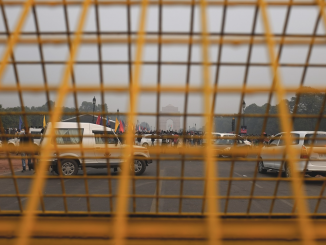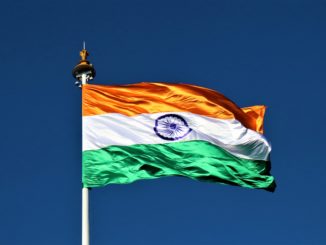
Globalization is the process of social, political, economic, and cultural International Integration. It is not a new development or new manifestation. It has existed since the dawn of human history, but the process has just accelerated in the contemporary age on account of boosted interaction with the development of means of communication particularly the electronic and social media between individuals, societies, and nations.
These relations and connections even over long distances did exist in historic times in the form of the famous Silk Route that united Asia, Africa, and Europe. Later in the 14th and 15th century Muslim Arabs, Turks, and then Europeans made important improvements in investigating the World Oceans, resulting in the discovery of the sea routes to India, Malaysia, Indonesia, and American mainlands. These discoveries carried along with the variety of languages, cultural habits, and values, and happened to be an important source of dissemination and extension of religions like Christianity, Islam, and Buddhism. Nevertheless, with the discovery of new forms of transportation (such as steamship and railroads) in the 19th- century global interaction and movement of people and goods increased manifold. In the 20th & 21st centuries, the innovation of aircraft, electronic modes of communications (mobile phones and the Internet) further gripped the world and has made the socio-economic integration of the world swifter.
As a result of globalization, the world has become increasingly small. It permits people, ideas, languages, goods, information to flow across national and international borders all the time. No doubt globalization is extremely rewarding for thriving businesses. It is also critical for the development of the international economy. It is also critical for the world economy’s growth. It has facilitated access to diverse markets in support of international trade agreements. It helps in expanding and improving your brand on a worldwide scale.
To enjoy all these benefits there must be no restrictions to traveling to the International level. The liberation to travel everywhere in the world incorporated global supply chains and thriving affiliated markets and national economies have been somewhat missing over the past year. Since March 2020, travel restrictions and quarantines have been implemented, as well as national lockdowns, significant unemployment, and business closures.
COVID-19 is the biggest peacetime disruptor of globalization in the record of the modern world and in the international trading system, it implies a distinctive threat. The spread of the COVID-19 pandemic gives a unique set-up to recognize and study the distribution of a global production shock along the global value chains for three main reasons. First, it is the largest production disturbance in recent world history. With around 200M cases, 4.25 deaths, and millions of people in quarantine around the world to date, the spread of COVID-19 disease is the biggest pandemics ever suffered in the globalized world. Second, the COVID-19 is not an economic shock in its nature, hence its origin and distribution are independent of the fundamentals of the economy. Third, it is a global shock. Indeed, while the majority of natural crises or epidemics have local proportions, but the COVID 19 has not been confined to China only, but circulated across the world immediately.
Every single economy has been impacted by the pandemic. They faced recession and pessimism. The crisis and the public health reaction are becoming the source of the biggest and quick deterioration in international progressions in modern history. Worldwide merchandise trade flows reduced considerably in 2020, as Covid-19 disrupted economic activity across the globe. There are a fall of 30-40 % in foreign direct investment and a 44-80% decline in international airline passengers in 2020. These numbers indicate a major rollback of globalization’s current gains, but they do not signal a fundamental collapse of international market integration.
According to WHO from 2020-2021, there is a tremendous decrease in the export of global goods, which is very hurting, especially in the context of the present larger and more complicated world economy. It has declined to a level last seen in the mid-to-late 2000s. Even the most pessimistic trade predictions do not imply an escape to a world of detached national markets.
During the time of quarantine, countries having the percentage of COVID-19 cases to the employed population above 0.05% assign a policy according to which up to one month 60 percent of the labor force is quarantined. Because of this most countries with quarantined labor legion suffer a drop in actual income up to 14 percent, with the most pronounced drops for China, Finland, and the UK. The role of the global creation linkages in amplifying the effect of the production shock is clear when we look at countries for which we do not commit the quarantine restriction under the quarantine scenario.
In the report of January 2021, the International Labor Organization (ILO) rated that 93 percent of the world’s workers as a result of the global pandemic were living under some form of workplace restrictions and relative to the fourth quarter of 2019 in 2020 8.8% of global working hours were lost. It is also told that the loss in working hours was included of workers who were jobless, but actively urging employment, 2nd workers who were committed, but had their working hours reduced, and 3rd workers who were jobless and not actively seeking employment. Based on this approach, the ILO estimated that unemployment globally was equivalent to 0.9% of total working hours lost in 2020, while inactivity and reduced hours accounted for 7.9% of total working hours lost. In Europe, the total working hours lost in 2020 is 14.6% and in America it is 13.7%, where Quarantine and lockdowns had been expansive, followed by lower-middle-income economies.
The IMF also concluded the global economic recovery would occur at different speeds across and within individual countries, reflecting differences in the pace of vaccinations, the extent of policy support, and various structural conditions, such as the role of tourism in the economy. Within countries, the employment and earnings of youth, women, and the relatively lower-skilled workers have been affected the most.
According to the WHO, 16 African nations were experiencing their worst period of the pandemic in early July 2021 as a consequence of increasing infection and mortality rates, with even higher numbers anticipated. Some of the most severely affected countries are Namibia, Zambia, Uganda, and South Africa, The WHO revealed the continent was suffering the third wave of infections as a result of the rapidly spreading Delta variant. It has been reported that less than one percent of the continent’s population has been vaccinated.
In July 2021, the OECD calculated the pandemic-related slump cost 22 million jobs in OECD countries in 2020 and 114 million jobs globally, compared with 2019. Antonio Guterres, UN Secretary-General suggested that we have reached a unipolar to a no-polar world from a bipolar world, where global powers, be the traditional friends or foes, are unable to work together.
Indeed, the covid-19 has left unprecedented impacts on the world. It has drastically affected lives and livelihoods. It has also disrupted economic activities throughout the world. No nation has remained immune from its repercussions, for what started in China spread across the world like a wildfire. Resultantly, it has hurt the current globalized world in multifarious ways including by disrupting trade, closing borders, to name a few. It is important that the world community comes up with a unified response to minimize the damages inflicted by the pandemic
![]()




very well researched
Waooo spectacular!